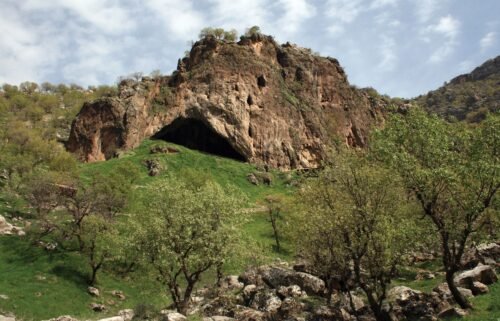‘World’s oldest bread,’ dating back 8,600 years, discovered in Turkey
(CNN) — Archeologists in Turkey say they have discovered the world’s oldest known bread, dating back to 6600 BC.
A largely destroyed oven structure was found in an area called “Mekan 66,” where there are adjoining mudbrick houses, at the archeological site of Çatalhöyük in the southern Turkish province of Konya, according to Turkey’s Necmettin Erbakan University Science and Technology Research and Application Center (BİTAM).
Around the oven, archeologists found wheat, barley, pea seeds and a palm-sized, round, “spongy” residue, it said in a press release Wednesday.
Analyses determined that the organic residue was 8,600-year-old, uncooked, fermented bread.
“We can say that this find at Çatalhöyük is the oldest bread in the world,” archeologist Ali Umut Türkcan, head of the Excavation Delegation and an associate professor at Anadolu University in Turkey, told Turkish state news outlet Anadolu Agency Wednesday.
“It is a smaller version of a loaf of bread. It has a finger pressed in the center, it has not been baked, but it has been fermented and has survived to the present day with the starches inside. There is no similar example of something like this to date,” he added.
Scanning electron microscope images showed air spaces in the sample, with the sighting of starch grains “eliminating our suspicions,” biologist Salih Kavak, a lecturer at Gaziantep University in Turkey, said in the release.
He added that analyses uncovered chemicals found in plants and indicators of fermentation. Flour and water had been mixed in, with the bread having been prepared next to the oven and kept for a while.
“It is an exciting discovery for Turkey and the world,” Kavak said.
The organic matter – both wood and bread – was preserved by thin clay that covered the structure, according to Türkcan.
Çatalhöyük, which is a UNESCO World Heritage site, was home to approximately 8,000 people during the Neolithic period, between around 10,000 BC to 2,000 BC, and is one of the world’s first places of urbanization, according to BITAM.
Research at the well-preserved site has revealed distinctive housing layouts and extensive features such as wall paintings and reliefs – causing it to be considered “the most significant human settlement documenting early settled agricultural life of a Neolithic community,” according to the UNESCO website.
“Çatalhöyük was already the center of many firsts. The world’s first weavings were already in Çatalhöyük when it was excavated. Wooden artifacts were also in Çatalhöyük. Wall paints and paintings were added to this. Konya and Turkey are very lucky in this sense,” Türkcan said.
The-CNN-Wire
™ & © 2024 Cable News Network, Inc., a Warner Bros. Discovery Company. All rights reserved.


